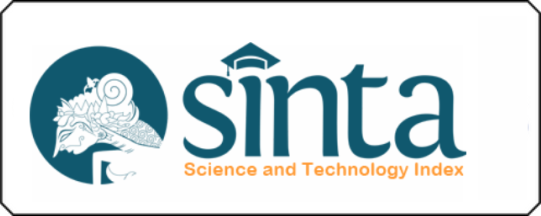
Author Guidelines
International Journal of Educational Guidance (IJEG) is an international journal that focuses primarily on education, including planning, implementation, and evaluation of education in a global perspective and context. The International Journal of Educational Guidance (IJEG) aims to develop an understanding of education and promote improvements in the quality of education systems worldwide. This journal encourages exchanging ideas, research results, and practical experiences among academics, educational practitioners, and other stakeholders.
The journal covers a wide variety of education-related topics, including, but not limited to: 1) general education, 2) vocational education, 3) education policy, 4) psychology in education, 5) curriculum and pedagogy, 6) evaluation in education, 7) e-learning, learning technology, and distance education, 8) educational management and administration, 9) social Education, 10) tourism education, and 11) civic and citizenship education.
Kindly please download the template of the IJEG (download).
Checklist for preparing your paper for publication
You can use this list to carry out a final check of your submission before you send it to the journal for review.
- Is your manuscript adhere to the minimum standards? (written in English; the length of submitted paper is at least 4 pages and no more than 20 pages; use of a tool such as EndNote, Mendeley, or Zotero for reference management and formatting, and choose APA style 7)
- Is your manuscript written in IJEG format? At this stage, it is essential that you follow every detail of the IJEG format. Please try to follow the format as closely as possible.
- is your title adequate and is your abstract correctly written? The title of paper is max 10 words, without Acronym or abbreviation. The Abstract (MAX 200 WORDS) should be informative and completely self-explanatory (no citation in abstract), provide a clear statement of the problem, the proposed approach or solution, and point out major findings and conclusions.
- Authors are suggested to present their articles in the sections structure: Introduction - The Proposed Method/Algorithm/Procedure specifically designed (optional) - Research Method - Results and Discussion – Conclusion. Authors may present complex proofs of theorems or non-obvious proofs of correctness of algorithms after introduction section (obvious theorems & straightforward proofs of existing theorems are NOT needed).
- Introduction section: explain the context of the study and state the precise objective. An Introduction should contain the following three parts:
- Background: Authors have to make clear what the context is. Ideally, authors should give an idea of the state-of-the art of the field the report is about.
- The Problem: If there was no problem, there would be no reason for writing a manuscript, and definitely no reason for reading it. So, please tell readers why they should proceed reading. Experience shows that for this part a few lines are often sufficient.
- The Proposed Solution: Now and only now! - authors may outline the contribution of the manuscript. Here authors have to make sure readers point out what are the novel aspects of authors work.
Authors should place the paper in proper context by citing relevant papers. At least, 5 references (recently journal articles) are used in this section. - Method section: the presentation of the experimental methods should be clear and complete in every detail facilitating reproducibility by other scientists.
- Results and discussion section: The presentation of results should be simple and straightforward in style. This section report the most important findings, including results of statistical analyses as apropriate and comparisons to other research results. Results given in figures should not be repeated in tables. This is where the author(s) should explain in words what he/she/they discovered in the research. It should be clearly laid out and in a logical sequence. This section should be supported suitable references.
- Conclusion section: Summarize sentences the primary outcomes of the study in a paragraph. Are the claims in this section supported by the results, do they seem reasonable? Have the authors indicated how the results relate to expectations and to earlier research? Does the article support or contradict previous theories? Does the conclusion explain how the research has moved the body of scientific knowledge forward?
- Language. If an article is poorly written due to grammatical errors, while it may make it more difficult to understand the science.
- Please be sure that the manuscript is up to date. It is expected that 10 to 20% of references are to recent papers.
- Is the manuscript clearly written? Is the article exciting? Does the content flow well from one section to another? Please try to keep your manuscript on the proper level. It should be easy to understand by well qualified professionals, but at the same time please avoid describing well known facts (use proper references instead). Often manuscripts receive negative reviews because reviewers are not able to understand the manuscript and this is authors' (not reviewers') fault. Notice, that if reviewers have difficulties, then other readers will face the same problem and there is no reason to publish the manuscript.
- Do you have enough references? We will usually expect a minimum of 10 to 25 references primarily to journal papers, depending on the length of the paper. Citations of textbooks should be used very rarely and citations to web pages should be avoided. All cited papers should be referenced within the text of the manuscript.
- Figures and Tables. Relation of Tables or Figures and Text: Because tables and figures supplement the text, all tables and figures should be referenced in the text. Authos also must explain what the reader should look for when using the table or figure. Focus only on the important point the reader should draw from them, and leave the details for the reader to examine on her own.
- IJEG only allows authors to submit articles in Docx format.

























